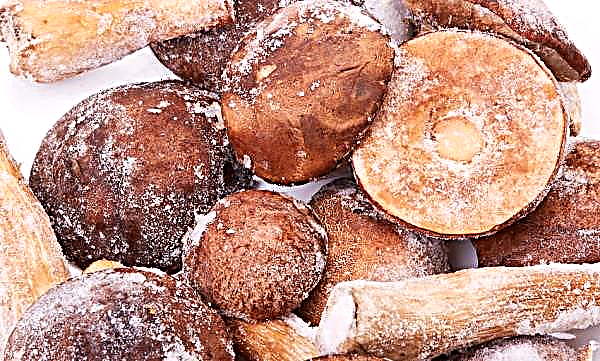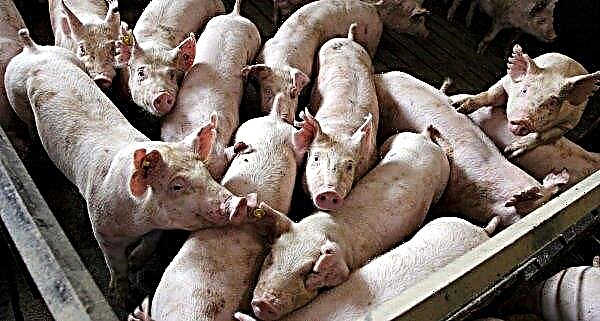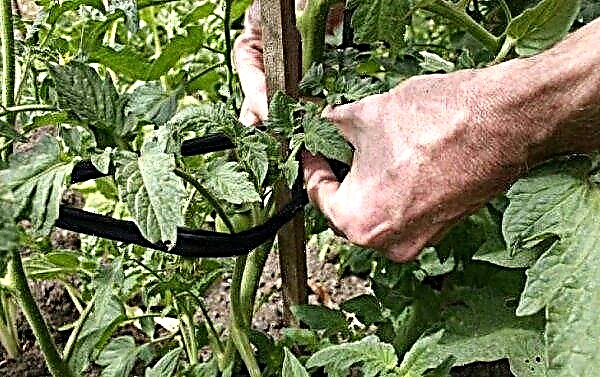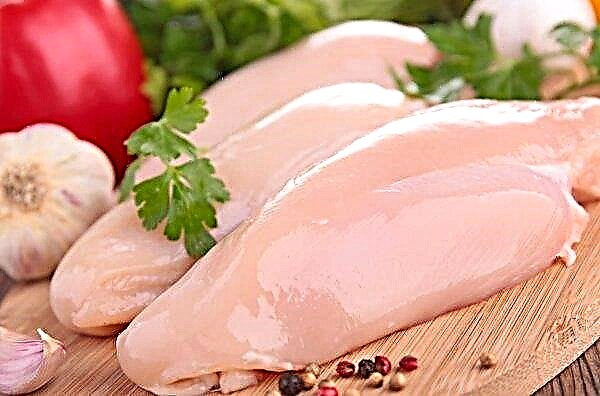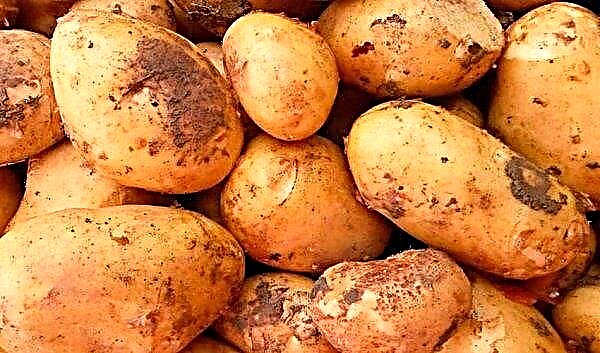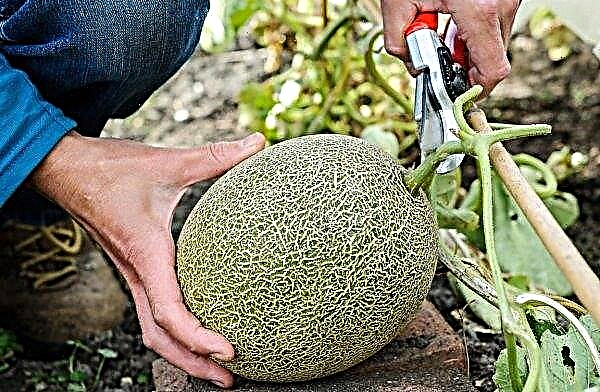Every cow owner expects his cattle to produce a lot of milk. But it happens that the milk yield does not live up to the expectations of the owner of the burenka, this is especially unpleasant when before the cow gave much more product than now. The reasons can be very diverse, and each of them needs to be understood in order to increase milk yield.
Why does a cow have less milk after calving
Milk from a burenka can disappear either partially or completely. The reasons can be very diverse: from noise in the barn to fatal diseases.
Important! The volume of milk produced by one cow is usually calculated over a lactation period. The countdown begins with the birth of the first calf. Usually this period begins from the moment of calving and ends a couple of months before the next birth. The cow has a gestation period of nine months.
Let's consider them in more detail:
- Reduced milk production may occur seasonally in older animals and those that are in the deadwood period.
- A poor diet and vitamin deficiency lead to a decrease in productivity. In order to increase the amount of milk, you need to review the quality of feed. It is best to give the animal fresh vegetables, especially root vegetables without signs of rot.
- Digestive system ailments, due to which the animal does not absorb vitamins and minerals from feed poorly. In this case, if you are sure of the correct feeding of the cow, you need to contact a veterinarian who will conduct timely diagnostics and prescribe treatment for the animal.
- Stress caused by a change in the milking, excessive noise in the barn, moving. It will be enough just to leave the animal alone for a while and provide proper care.
- Poor conditions of detention lead not only to a decrease in milk yield, but also to the complete disappearance of milk. To avoid this, you need to monitor the cleanliness and humidity level of the barn, as well as the hygiene of the animal itself.

Poor conditions
In order to prevent unsanitary conditions in the barn and poor care for the animal, the following rules should be followed:
- An attentive cow owner should always keep his animal fed and well-groomed. The burenka should be protected from cold and moisture - this will preserve the health of the animal, and therefore its productivity.
- The pen should be a reliable shelter for the cow, the occurrence of drafts and dampness is unacceptable in it, otherwise the appearance of inflammation and disease in the animal.
- It is very important to monitor the cleanliness in the barn and change the old litter in time as they become contaminated. The same applies to cleaning manure, which needs to be cleaned regularly to avoid infection and fungi in the stable.
- Disinfection is another important element in cow maintenance. To avoid infection in the herd, it is necessary to place a box at the entrance to the barn, in which to place sawdust with a disinfectant. It is also worth disinfecting the room at least once a month.
- Do not neglect the observance of the temperature regime in the pen, the permissible norm for cows is 8-10 degrees. In this case, the animal will not spend excess energy on heating or exhaust from the heat, and all resources will be spent on milk production or weight gain. From time to time you need to ventilate the barn.
Important! Often milking is reduced due to the fact that the cow is surrounded by excessive noise, including insects, equipment and so on. That is why stress is unacceptable for a milking animal.
Improper feeding
The feeding regimen for the cow is very important. The animal gets used to one meal time and waits for it at this particular time. Neglecting the regime and changing the feeding time can lead to a loss in milk production. Sometimes the reason for the decrease in the amount of milk may be the transfer of the animal to another type of feed, such as grain. It will take up to three weeks to get used to, so that microorganisms appear in the body that contribute to its processing.
Sometimes the reason for the decrease in the amount of milk may be the transfer of the animal to another type of feed, such as grain. It will take up to three weeks to get used to, so that microorganisms appear in the body that contribute to its processing.
In order for the volume of milk production to be sufficiently high, the animal feed should consist of hay, straw, barley, mixed fodder, root crops, tubers, and also contain a large amount of vitamins and minerals.
It is important to ensure that the cow always has fresh food without rot. The same goes for water, in which salt can sometimes be added.
Wrong milking
The milking process is a skill that not everyone is given immediately. It should be similar to the calf’s natural movements during feeding. The quantity of the product obtained directly depends on how correctly you milk the cows.
In order to avoid a decrease in milk yield, it is enough to observe the following rules:
- You need to milk a cow regularly at the same time in the morning and in the evening.
- Before milking, the udder should be wiped with clean, warm water and wiped dry.
- It will not be superfluous to massage the udder and nipples for about a minute. This will help the flow of milk, and the animal will give all the liquid.
- Milking itself lasts no more than 5 minutes, after which it is recommended to conduct another massage and squeeze out the last, fattest drops. You do not need to leave them, as this can cause inflammation in the future.
Immediately after the birth of the calf, the milking period begins. A baby is usually picked up after a week, when the cow stops giving colostrum and large milk arrives. In this case, milking continues, then the animal will take what is happening as a feeding period. While there is a milking period, it is better to milk cattle several times a day, observing the same interval. After a week, it is enough to reduce the number of times to three. This mode is favorable for the production of milk.
While there is a milking period, it is better to milk cattle several times a day, observing the same interval. After a week, it is enough to reduce the number of times to three. This mode is favorable for the production of milk.
At first, its quantity may be small, and the correct bite will improve the taste of the product and increase the quantity. Often it is the wrong milking process that leads to poor cow productivity.
Important! To milking a cow, you need to carefully prepare yourself by cleaning the stall and getting rid of insects in the stable. To do this, experienced farmers use smokers, the same as for bees.
Age
The younger the burenka, the less milk it gives. And only after the 4th – 5th calving its productivity increases. Productivity records and old cows do not break.
The amount of milk depends on the duration of the calf with the mother. Do not delay with natural feeding, otherwise the volume of milk yield will decrease.
Also, a cow may produce little milk during preparation for childbirth. When the amount of milk drops to two glasses per day, milking is stopped completely. This is followed by a period of dead wood.
Disease
During calving, the cow’s body experiences extreme stress, so it requires special care. The borenka that has given birth requires no less attention than the calf. Otherwise, painful consequences may occur.
Impaired reflex
The most common cause of impaired milk yield reflexes is stress, as a result of which the hormone epinephrine is released into the bloodstream, which blocks the animal’s brain centers responsible for milk production.
Stress for a cow can be:
- animal maltreatment;
- the change of the person who milks;
- pain during milking;
- unusual sounds in the barn and excessive noise;
- sudden removal of the calf.
This violation does not have a clear time limit and can occur in any period of lactation. To eliminate the problem, you need to carefully examine the conditions of the animal and eliminate the possible causes of stress of the burenka as soon as possible.
Did you know? For 24 hours, one cow releases 8–10 kg of steam during breathing. If the barn is not ventilated, then the humidity may increase to a critical level, which will cause respiratory system diseases.
Nipple or udder injuries
Injury to the udder can lead to a significant decrease in cow performance in the future. With extensive hematoma, if it has not completely resolved, the glandular tissue becomes connective, while the productivity of the animal decreases. For the period of treatment, the cow must be placed in a clean, dry stall and the animal is kept calm. Juicy feed is completely excluded from the diet, the amount of water is reduced.
For the period of treatment, the cow must be placed in a clean, dry stall and the animal is kept calm. Juicy feed is completely excluded from the diet, the amount of water is reduced.
During the treatment period, the cow must be given massage and regular expressing of milk. The affected area is lubricated with special ointments.
On the first day, cold compresses are applied to the bruise to remove the edema and relieve pain. On the second or third day, the compress should already warm. To achieve this effect, gauze is impregnated with alcohol and imposed on a sore spot, wrapping it all with cellophane and covering with cotton.
If the damage is not too large, then the disease will pass in a few days.
Mastitis
Mastitis is a common disease among cows after giving birth. It occurs after damage occurs on the nipples and udder, the reason for this is the wrong milking process. Dirt from the barn can get into the cracks on the skin, which will be an excellent soil for the development of infection.
Another reason is the late release of the placenta in the animal. This leads to inflammation of the interlobular connective tissue on the udder.
It happens that with this ailment, the animal's temperature rises, and the properties of milk do not change immediately. Then flakes begin to appear in the liquid, the quantity and quality of milk yield decreases. If you do not start treatment on time, the infection will go deeper. The milk will clot, and blood and purulent elements will appear in it. To help the animal, it is necessary to reduce the amount of concentrates and succulent feed in the diet and milk the cow at least six times a day. The cow should be treated with lotions, anti-inflammatory ointments and medicines.
To help the animal, it is necessary to reduce the amount of concentrates and succulent feed in the diet and milk the cow at least six times a day. The cow should be treated with lotions, anti-inflammatory ointments and medicines.
Did you know? For the first time, cows were talked about mastitis in France in 1884. He is described as the most economically disadvantaged disease. Nowadays, it has become possible to cure a cowshed of an illness in just a couple of weeks.
Ketosis
Blood in milk can be a harbinger of ketosis. It can occur due to improper maintenance or poor nutrition of the animal. Most often, the disease affects productive animals. They disrupt metabolic processes, and ketone bodies accumulate in the body.
Basically, it appears after calving or during crushing. Ketosis can lead to reduced cow productivity.
The acute form is characterized by strong excitement of the animal with abundant salivation. Over time, the animal becomes lethargic, can fall into a coma, the hind legs paralyze the cow, which often leads to death.
Chronic ketosis does not manifest itself so clearly. At the same time, milk may smell like acetone and froth poorly, and blood can be traced in its composition. To avoid the occurrence of this ailment, it is necessary to protect the animal from excessive consumption of proteins, and to focus on the energy diet and vitamin feed, to provide the animal with regular walks.
To avoid the occurrence of this ailment, it is necessary to protect the animal from excessive consumption of proteins, and to focus on the energy diet and vitamin feed, to provide the animal with regular walks.
In the postpartum period, the cow’s body is very susceptible and susceptible to various negative influences from the outside, therefore, at this time, it is necessary to ensure the animal is completely at rest and protect it from possible troubles with the help of daily care.

